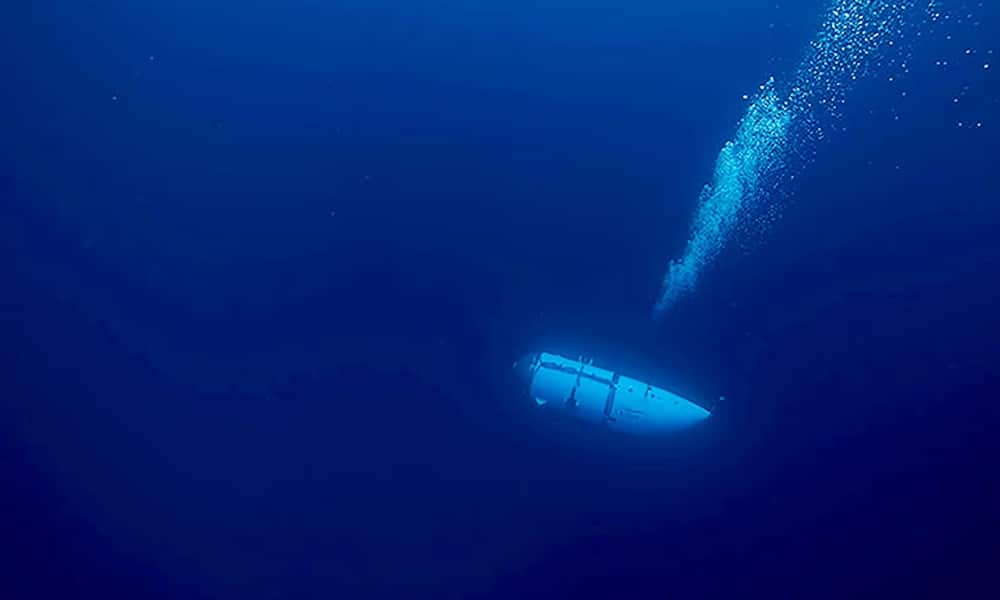Estimated reading time: 5 minutes
Table of contents
- Titan’s Catastrophic Journey: The Story Thus Far
- Pieces of Titan Recovered: Unearthing the Ocean’s Secrets
- Titan Wreckage Recovery: A Glimpse into the Investigation
- Horizon Arctic and Coast Guard Representatives
- Moving Forward: Addressing the Major Marine Casualty
- Post-mortem of the Voyage: OceanGate Expeditions Under Scrutiny
- Frequently Asked Questions about the Recovery and Investigation
- More Titan Stories
St. John’s, Newfoundland port witnessed the arrival of significant fragments from the ill-fated Titan submersible on Wednesday, marking a pivotal moment in the ongoing investigation into its tragic implosion during the Titanic wreck expedition.

Titan’s Catastrophic Journey: The Story Thus Far
The journey to the Titanic’s wreck turned to disaster last week when the Titan submersible imploded, claiming the lives of all five passengers aboard. The retrieval of twisted remnants from the 22-foot underwater vehicle, now scattered across the ocean floor, was brought to a Canadian Coast Guard pier in St. John’s, furthering the investigation into the catastrophe.
Pieces of Titan Recovered: Unearthing the Ocean’s Secrets
The Horizon Arctic, a Canadian vessel, played a central role in the debris recovery operation, deploying a remotely operated vehicle (ROV) to scour the ocean floor near the Titanic’s wreckage. The ROV, owned by Massachusetts and New York-based Pelagic Research Services, completed the offshore operations on Wednesday. The team refrained from commenting on the ongoing investigation, focusing instead on the mission at hand.
Titan Wreckage Recovery: A Glimpse into the Investigation
The debris from the Titan, located approximately 12,500 feet underwater and around 1,600 feet from the Titanic wreck, serves as a vital clue into the disastrous event. The Coast Guard, which leads the investigation, had announced the submersible’s implosion and the loss of all lives on board on June 22.
The incident has now been escalated to a Marine Board of Investigation, the highest level of inquiry within the Coast Guard. Potential electronic data from the submersible’s instruments, as suggested by Woods Hole Oceanographic Institution’s Carl Hartsfield, could prove to be vital in understanding the Titan’s tragic descent.
The military branch, the US Coast Guard, reported on Wednesday that they have retrieved what they believe to be human remains from the ocean floor in the vicinity of the Titan submersible’s debris field. A comprehensive analysis is set to be conducted to confirm these findings.
Horizon Arctic and Coast Guard Representatives
Despite requests for comments on the Titan wreckage recovery, representatives for Horizon Arctic, Coast Guard, National Transportation Safety Board, and the Transportation Safety Board of Canada have chosen to remain silent, refraining from commenting on the returned debris or the investigation.
Moving Forward: Addressing the Major Marine Casualty
The loss of the Titan, now classified as a “major marine casualty,” will see the Coast Guard leading the investigation, as clarified by the National Transportation Safety Board. Further information will not be disclosed until the investigation concludes, as stated by Liam MacDonald, a spokesperson for the Transportation Safety Board of Canada.
Post-mortem of the Voyage: OceanGate Expeditions Under Scrutiny
The U.S.-based OceanGate Expeditions, the company behind the Titan, has come under scrutiny following the catastrophic event. Concerns are rising over the safety standards of private underwater exploration, spurred by the Titan’s hefty $250,000 ticket price. The Coast Guard has expressed an intention to use the findings from this investigation to enhance safety regulations surrounding submersible operations, aiming to prevent such disasters in the future.
Frequently Asked Questions about the Recovery and Investigation
The Titan submersible imploded during a voyage to the wreck of the Titanic, killing all five people on board. The cause of the implosion is under investigation.
The debris from the Titan was recovered near the Titanic wreck site, about 12,500 feet underwater. It was returned to the Canadian Coast Guard pier in St. John’s, Newfoundland.
The U.S. Coast Guard is leading the investigation into the Titan’s implosion, which they have declared a “major marine casualty.” The National Transportation Safety Board and the Transportation Safety Board of Canada are also involved in the investigation.
The passengers on the Titan were Ocean Gate CEO and pilot Stockton Rush, members of a prominent Pakistani family Shahzada Dawood and his son Suleman Dawood, British adventurer Hamish Harding, and Titanic expert Paul-Henri Nargeolet.
The Titan was embarking on a voyage to the wreck of the Titanic. Passengers were charged $250,000 each to participate in the voyage.
The Titan was owned and operated by OceanGate Expeditions, a U.S.-based company.
The pieces of Titan recovered will be analyzed to determine the cause of the implosion. It is hoped that data recorded by the submersible’s instruments will provide important clues about what went wrong during its descent.
As of the current report, there has been no official confirmation regarding the recovery of the bodies of the crew members from the Titan submersible. The investigation and recovery mission has primarily focused on locating and recovering the wreckage of the vessel.


